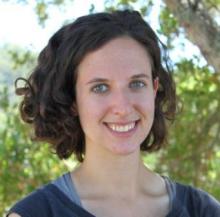An unexpected early morning phone call from the hospital is never good news. When Joy Johnson answered, her first thought was that Sharon Birzer, her partner of 15 years, was dead. Her fears were amplified by the voice on the other end refusing to confirm or deny it. Just “come in and talk to one of the doctors,” she remembers the voice saying.
Johnson knew this was a real possibility. A few weeks earlier, she and Birzer sat in the exam room of a lymphoma specialist at Stanford University. Birzer’s cancer had grown, and fast — first during one type of chemotherapy, then through a second. Out of standard options, Birzer’s local oncologist had referred her for a novel treatment called chimeric antigen receptor T-cell therapy — or CAR-T. Birzer and Johnson knew the treatment was risky. They were warned there was a chance of death. There was also a chance of serious complications such as multi-organ failure and neurological impairment. But it was like warning a drowning person that her lifeboat could have problems. Without treatment, the chance of Birzer’s death was all but certain. She signed the consent form.
Johnson hung up the phone that early morning and sped to the hospital. She met with a doctor and two chaplains in a windowless room in the cancer ward, where happy photos of cancer “alumni” smiled down from the walls. This is getting worse and worse, Johnson thought. As she remembers it, the doctor went through the timeline of what happened for 10 minutes, explaining how Birzer became sicker and sicker, before Johnson interrupted with the thought splitting her world in two: “I need you to tell me whether she’s alive or dead.”
Birzer wasn’t dead. But she was far from okay. The ordeal began with Birzer speaking gibberish. Then came seizures so severe there was concern she wouldn’t be able to breathe on her own. When it took a few different medications to stop Birzer from seizing, her doctors sedated her, put a breathing tube down her throat, and connected her to a ventilator. Now, she was unconscious and in the intensive care unit (ICU).
Birzer was one of the early patients to receive CAR-T, a radical new therapy to treat cancer. It involved removing Birzer’s own blood, filtering for immune cells called T-cells, and genetically engineering those cells to recognize and attack her lymphoma. CAR-T made history in 2017 as the first FDA-approved gene therapy to treat any disease. After three to six months of follow-up, the trials that led to approval showed response rates of 80 percent and above in aggressive leukemias and lymphomas that had resisted chemotherapy. Patients on the brink of death were coming back to life.
This is something I often dream of seeing but rarely do. As a doctor who treats cancer, I think a lot about how to frame new treatments to my patients. I never want to give false hope. But the uncertainty inherent to my field also cautions me against closing the door on optimism prematurely. We take it as a point of pride that no field of medicine evolves as rapidly as cancer — the FDA approves dozens of new treatments a year. One of my biggest challenges is staying up to date on every development and teasing apart what should — and shouldn’t — change my practice. I am often a mediator for my patients, tempering theoretical promises with everyday realism. To accept a research finding into medical practice, I prefer slow steps showing me proof of concept, safety, and efficacy.


